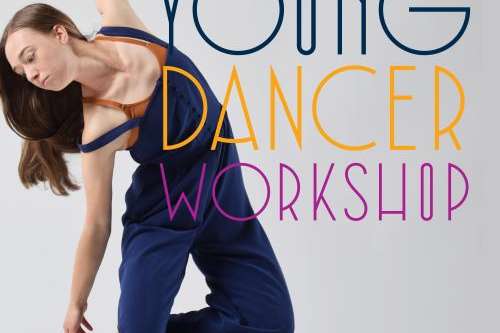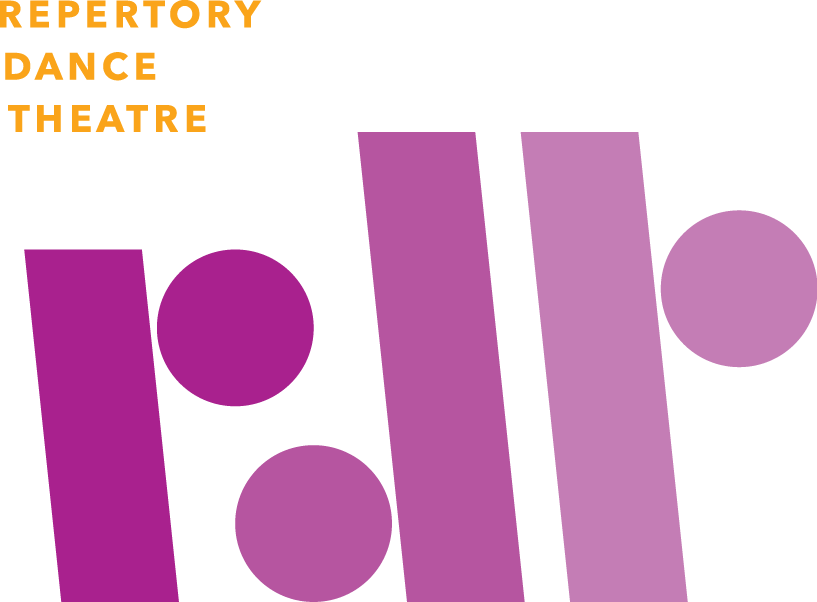Who We Are
Repertory Dance Theatre's education programs increase critical thinking and nonverbal reasoning skills, develop the ability to communicate as part of a group, encourage groups to work collaboratively, improve individual kinesthetic and spatial learning, as well as intra- and interpersonal knowledge of self and others. RDT’s nationally recognized and lauded Arts In Education (AIE) programs offers students and teachers across Utah much more than exercise or entertainment.


What We Do
Repertory Dance Theatre is dedicated to the creation, performance, perpetuation, and appreciation of modern dance. Whether welcoming the community—physically or digitally—to our home at the Rose Wagner Performing Arts Center in Salt Lake City or traveling to urban and rural locations around Utah, RDT builds community wherever we go; celebrating mutual and singular histories, aspirations, and experiences through performances, workshops, classes, and community- and school-based residencies.
Why Arts in Education
- Dance is fundamental to how we experience the world. Regardless of race, income, status, age, gender or location, dance and artistic expression are vital human tools that connect, support and heal.
- Dance develops Life Skills by encouraging good citizenship, helping students be responsible and understand their relationship to the other members of their group, family, class, or community.
- Dance provides opportunities to explore movement, improvisation, the creative process, and learning within the arts.
- Dance helps develop skills needed for emotional maturity and social effectiveness—sharing, cooperating, integrating, and interacting.
RDT uses dance as a way to
help people become more:
Physically Active. Creative. Aware. Inspired. Connected. Prepared. Educated.
Lesson Plans
Students will explore the different steps and movements that make up common social dance line dances. They will then take some of these ideas and create their own unique line dance by manipulating these movements and using choreographic principles.
This creative movement lesson designed for 3rd grade explores balanced and unbalanced forces using elements of dance.
This creative movement lesson using syllables is a great ice breaker for the beginning of the year or semester, a time when students are getting to know one another and the teacher is getting to know students’ names as well.
The goal of this lesson plan is to re-enforce the importance and power of abstract thinking and abstract movement in the choreographic process. This lesson plan can help teachers fight the pre-conceived notion that dance MUST TELL A STORY, that dance MUST BE ABOUT SOMETHING.
Often, young choreographers will select a pop song because they like the lyrics. As a result, they end up choreographing to the lyrics rather than the song itself: the mood, feeling, or other associations that go along with their dance’s theme. Hopefully, this lesson plan will showcase that often times, forgetting about the lyrics and finding a different “inspiration” from the music can be successful and, in fact, better than dancing to the lyrics.
This lesson plan can take place in two parts – however, part one can be done without part two.
This lesson plan is written for four groups; however, you can break your class into any number of groups as long as it is two or more. If using more or less than four groups, adjust the supplies and songs as needed.
Matinees
Join RDT for MIGRATIONS, an evening length work by Zvi Gotheiner exploring humanity's impact on the natural world throug
Join RDT for OVATION, a performance to celebrate the commission of new choreography. Featuring work by Yusha-Marie Sorza
Join RDT for ANTHOLOGY, a tribute to the masters of modern dance. Featuring work by Martha Graham, Helen Tamiris, Jose
Featured Content
For Intermediate/Advanced Dancers ages 12-14 Join Repertory Dance Theatre for a week long dance intensive, June 16-20
Professional Learning Workshop for Utah Jr High & High School Dance Educators June 16,17,18, 2025 9:00am - 1:00p
Throughout the school year, RDT dancers provide a master class of the week online for teachers to draw ideas from to hel
Pilar I is RDT’s amazingly talented Production Stage Manager, and lighting dance choreography is a central element of he








